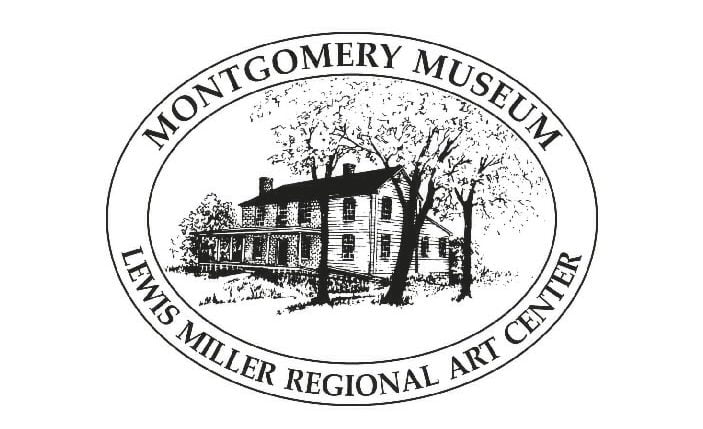The winter gardens of the Montgomery Museum on Pepper Street are glittering with blues and oranges of a recent public art exhibit.


Inside the handsome brick house, once a church manse, in sophisticated lighting, a contemporary textile art exhibit lines the hall and winds up the syrup-gold oak staircase. In the rooms beyond are local history exhibits, the genealogy records and leather-bound newspapers.
Somehow both venerable and hip, on opening nights this is an art space, full of light, energy and art talk. At the same time it’s a perceptive presenter of local history and a caretaker of the watercolors of everyday life in Montgomery County by 19th century folk artist Lewis Miller. To capture this contemporary tradition, this spring, the museum has redecorated both its logo and name.
Established in 1983, the “Montgomery Museum and the Lewis Miller Regional Art Center” originally represented by the pencil-sketch of the house in needle-point-y oval. This spring, it’s been transformed to an accessible, user-friendly “Montgomery Museum of Art and History” in smart red, black and white sans serif and an urban moniker “MMHA.”
“The old logo reflected a past vision and style,” Sue Farrar, director of the museum said. “We wanted to reflect a young, crisp forward motion. An uncluttered look that moves forward with new ideas and vision. Our mission statement is “Preserving history and presenting art.” We think this new title presents that mission more thoroughly.”
The rebranding was guided by local artist and graphic designer, Alex Crookshanks, new on the museum’s board and chair of the marketing committee
“We were trying to do something that looked traditional and slightly bold without losing our connection to the past. Bringing it into the now,” Crookshanks said on the phone from his Blacksburg studio. “We wanted to say “Okay, there’s this place full of art. It’s a really great place to have a weddings and parties with a beautiful gazebo and gardens for birthdays and anniversaries, memorable events. And the beautiful house for year-round gatherings.” It’s a great venue and the people are so great to work with.”
While the committees changed font and image, they captured continuity in their color choice.
“The red is meaningful and weaves together the red of the house’s 1850s Flemish bond brick and the surprise of red used by Lewis Miller,” Crookshanks said.
Curator Sherry Joines Wyatt pointed out how – and why – the past was incorporated into the now.
“It’s thought that the house and its church were made by the Dyerly family and the house is an important part of who the museum is. Also, artist Lewis Miller had a bright red. His palette is relatively narrow, but he used this bright red,” she said.
Weaving all this together, Crookshanks champions the museum as
“I was so happy to offer my services to them because I love what they do.


